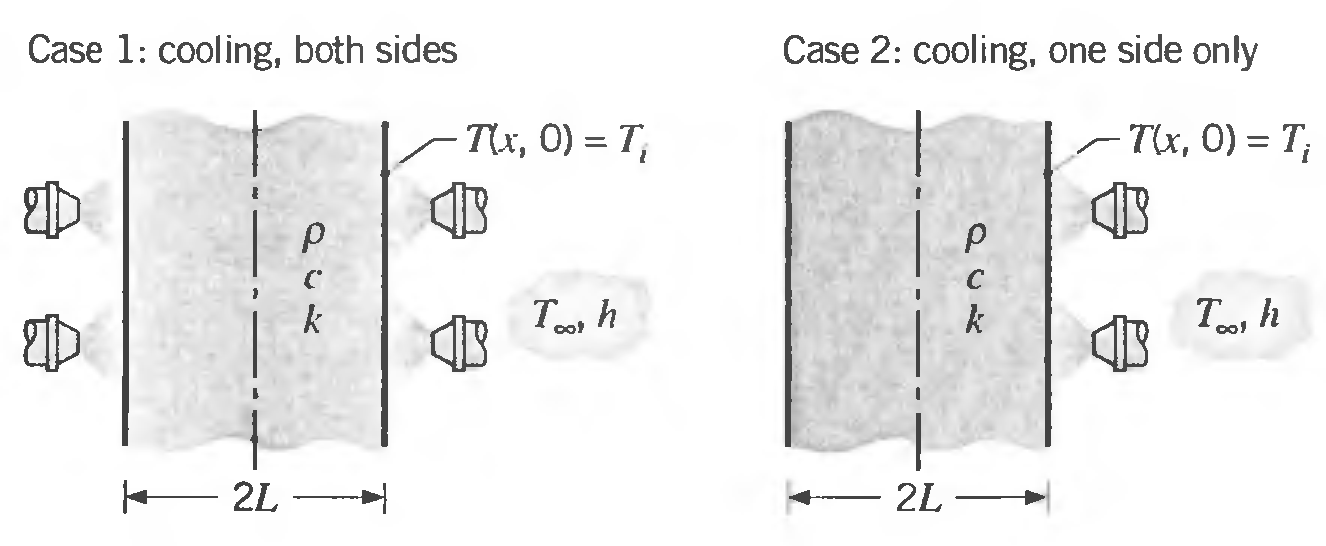A plate of thickness 2L = 25 mm at a temperature of 600C is removed from a
Question:
A plate of thickness 2L = 25 mm at a temperature of 600°C is removed from a hot pressing operation and must be cooled rapidly in order to achieve the required physical properties. The process engineer plans to use air jets to control the rate of cooling. But she is uncertain whether it is necessary to cool both sides (case 1) and only one side (case 2) of the plate. The concern is not just for the time-to-cool, but also for the maximum temperature difference within the plate. If this temperature difference is too large, the plate can experience significant warping.

The air supply is at 25°e, and the convection coefficient on the surface is 400 W/m2 ∙ K. The thermo physical properties of the plate are p = 3000 kg/m3, c = 750 J/kg ∙ K. and k = 15 W/m ∙ K.
(a) Using the IHT software, calculate and plot on one graph the temperature histories for cases I and 2 for a 500-s cooling period. Compare the times required for the maximum temperature in the plate to reach 100°C. Assume no heat loss from the unexposed surface of case 2.
(b) For both cases, calculate and plot on one graph the variation with time of the maximum temperature difference in the plate. Comment on the relative magnitudes of the temperature gradients within the plate as a function of time.
Step by Step Answer:

Fundamentals of Heat and Mass Transfer
ISBN: 978-0471457282
6th Edition
Authors: Incropera, Dewitt, Bergman, Lavine





